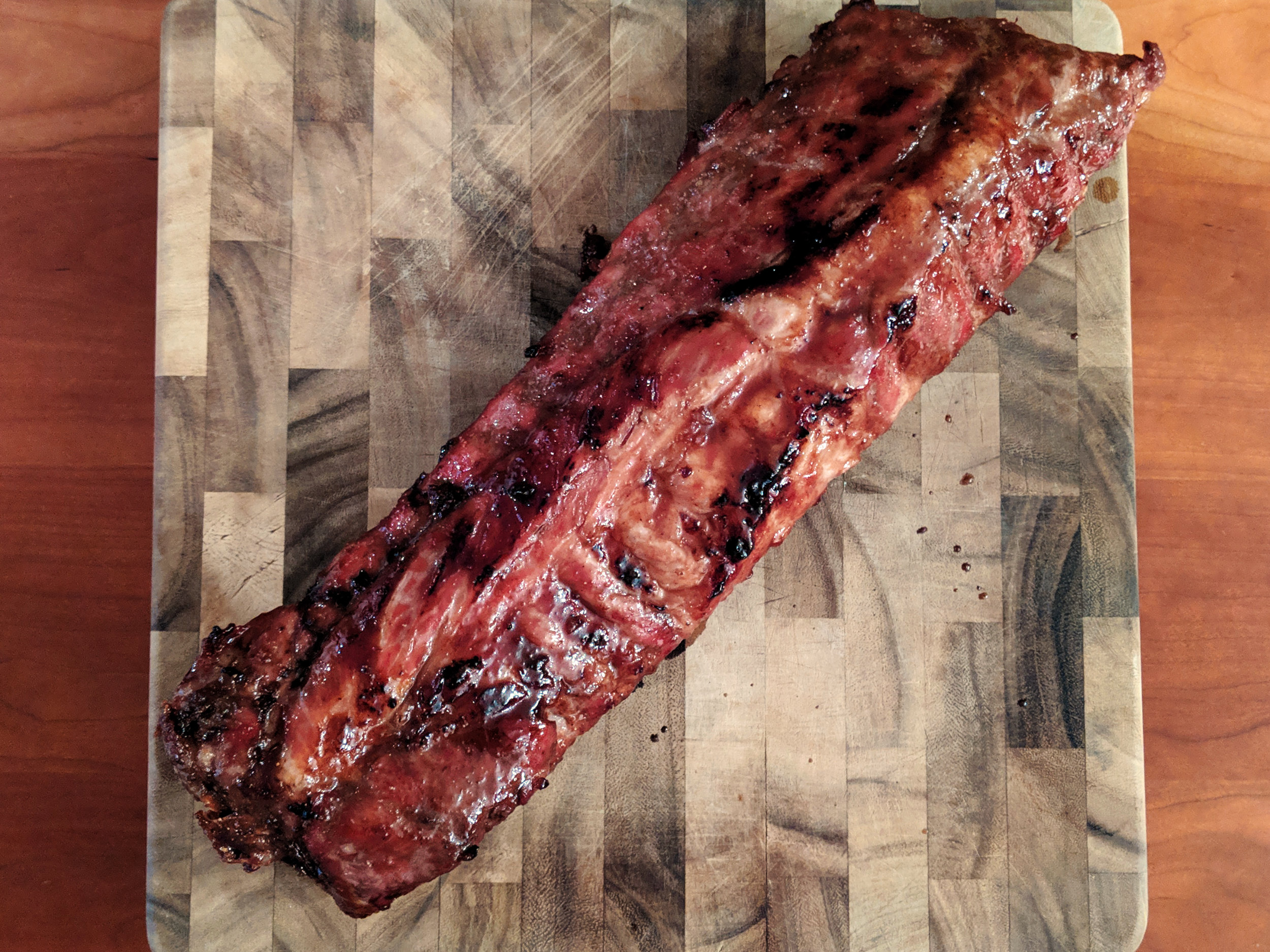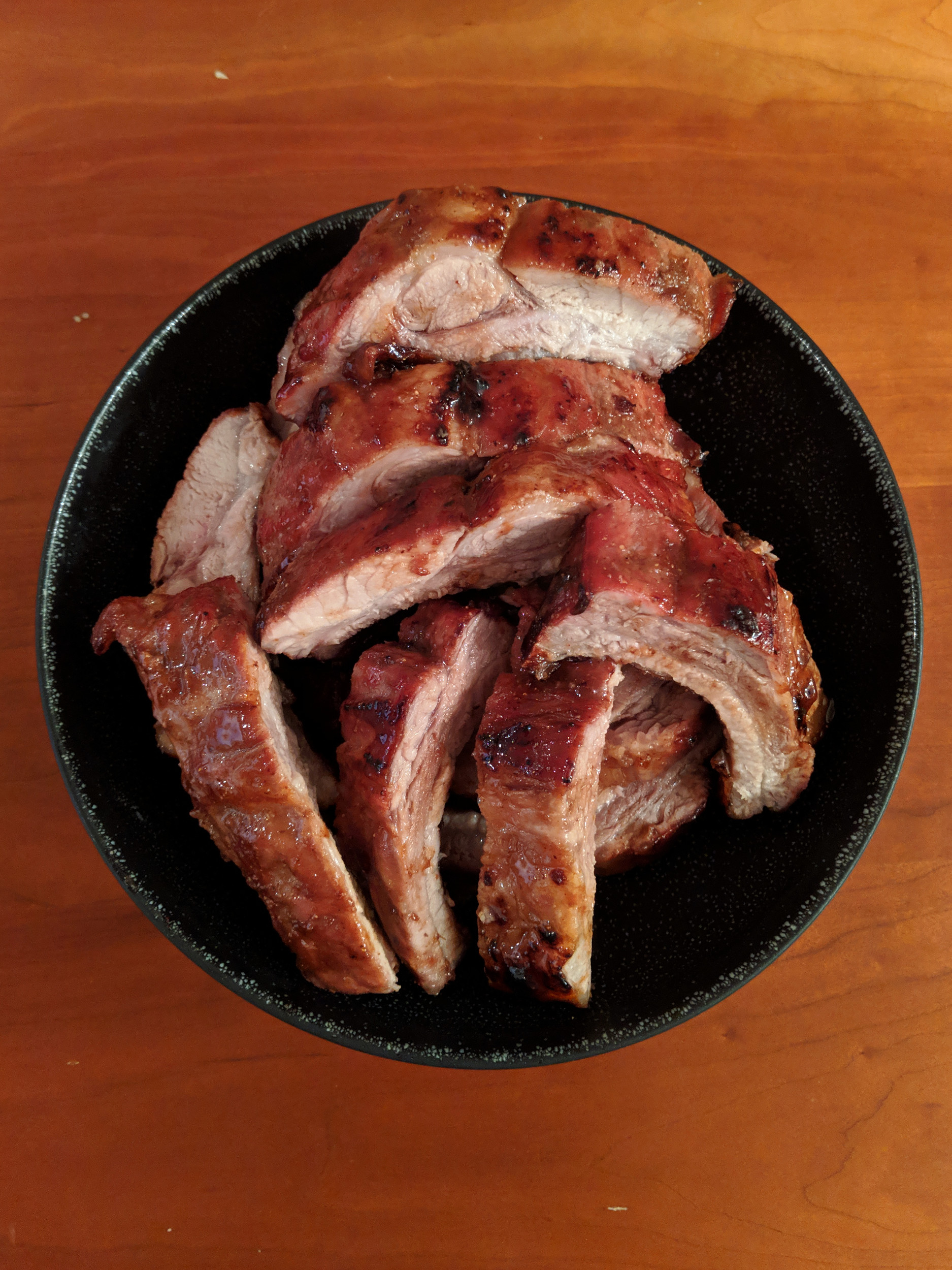Truly Mastering Chinese Style-Ribs at Home - Cha Siu Ribs

Seeing the most recent “lucky” attempt at fumbling with food from Asia, I remembered this article from the NY Times about Mastering Chinese Style-Ribs at Home. These are all great examples of why I started this website in the first place. Time after time, when it comes to the food world in America, white culture claims to love Asian food, but keeps erasing the Asian people behind that food. In the NY Times article a Chinese American, their restaurant family and recipe was mentioned, but in order to “master” this Cantonese dish their starting point was a white food blogger’s recipe for a pan-Asian caricature of cha siu ribs (no decent Cantonese chef/cook will ever marinate meat with any kind of acid unless if they want mushy meat. And mushy in a bad kind of way).
It seemed weird that this article spent a large part of it about 南乳 naam yu only to do a lazy cop-out for ketchup. A 1:1 replacement for ketchup for naam yu will only result eating a salt bomb. There is a Chinese word for ketchup, but I think it only exists in the Guangdong and Hong Kong dialects, but it’s 喼汁 kep zap. The only time I’ve come across this is out for dim sum when you order steamed beef meatballs and it comes with “ketchup”, but if you’re still guessing what 喼汁 kep zap is, in Cantonese that is worcestershire sauce. If you want to read up more on the complicated history of ketchup, Code Switch did a pretty good job with it. This was written in 2018 and these days it’s easy to buy just about anything online and naam yu is commonly found in any Chinese grocery store. There should be no excuse of getting it.
I cannot imagine anybody writing a recipe for cacio e pepe and saying if you can’t get Pecorino Romano, then milk is sufficient because they’re both made of of dairy. Then writing something like “Replicating Italian cacio e pepe in a modern kitchen is not difficult. But it demands some workarounds that may make purists uncomfortable. Such as milk.” For the large platform that the NY Times Cooking has, it really should do a much better job with getting access to good information. Despite having experts with years of experience, most sifus will largely be overlooked and undervalued in the US. I hope more people will reassess how they assign value and expertise to food culture and give the spotlight to the right people.
Okay, onto making cha siu ribs!
Earlier this year when I visited my family back in Honolulu, we had a family dinner at the restaurant my mom works at and they're pretty known at this point for making cha siu ribs. They started as an off-menu item made for visiting friends of sifu Fong, one of the former head chefs. They were enticing that customers from other tables immediately started asking for it and the kitchen would make it so long as you asked for it. This style of cha siu ribs started to become more popular with locals that cha siu ribs started to pop up more in other Chinese restaurants in Oahu. So it’s pretty cool to have this recipe be connected with the chef that started this before he retired. Though I do know the cha siu recipe my parents passed to me is already slightly different from how the chef made it at the restaurant because I remember the flavor being a little different. If you ask my parents about using naam yu, they’ll let you know that it’s almost exclusively paired with pork. The unique taste and fragrance of naam yu goes so well with the natural sweetness of pork. Once I started to make cha siu more, I played around with adding naam yu to it and found that replacing salt with it makes cha siu so good.
One of the best things about the ribs at the restaurant were their tenderness. I asked my parents if they use the technique of adding baking soda to tenderize the meat. Turns out there's none of that used and they told me about how it’s all about the cut. For a while they’ve been trying to describe what to look for and they would tell me to look for the rounder bones. The other clue was that it was the part of the pig that’s closest to the top of it’s back. That cut is also known as baby back ribs. You want this one because it’s more tender and for some true cook knowledge, the best part is the section closest to the shoulder. From the outside you can find a little extra dark meat. If you see flatter bones or cartilage, you have the St. Louis ribs and that’s not good for this recipe since it’s not done low and slow.
These cha siu ribs aren’t as brilliantly red as most recipes are, but they’re delicious and great for celebrating with any occasion with friends and family.
Recipe:
3 lbs rack of baby back ribs
½ c. sugar
½ tbsp. galangal (sand ginger) powder
¼ tsp. Chinese five spice powder
1 ½ to 2 crushed star anise
½ block naam yu (aprox 10 g.)
½ tbsp salt
1 heaping tbsp. mixed sauce (wahn hahp jeung)
Combine sugar, galangal (sand ginger) power, five spice, and crushed star anise in a bowl. Mix in naam yu and wahn hahp jeung until well combined. Rub the marinade on ribs and marinate for 60 to 90 minutes.
Preheat oven to 350F. Line a baking sheet with aluminum foil.
Just before going into the oven, rub the marinade again in case any of it is still unevenly on the ribs.
Roast for 40-45 minutes or until center reaches 155F. About 20-25 minutes into roasting, flip the ribs and baste.
When the ribs are done, let them rest for 15 minutes. Broil to char the outside and cut into piece and enjoy!






